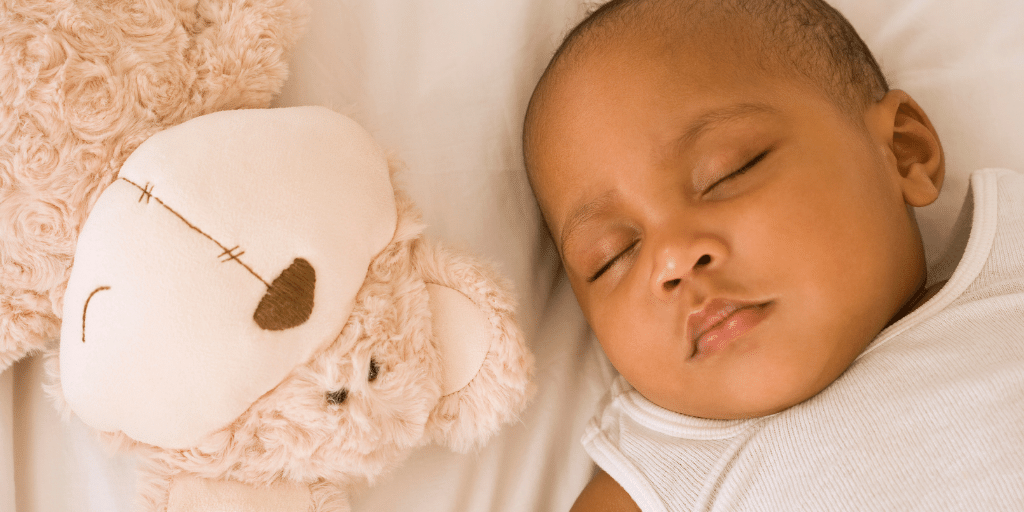How parents can cope with baby’s regressions during their first year.
by Nicole Johnson, Founder and Lead Consultant of The Baby Sleep Site®
A sleep regression is considered a time when a baby, who was sleeping well, suddenly starts waking a lot at night and/or taking short naps. During the first year, there are at least three sleep regressions that many babies experience and can be exhausting for parents. Here are five top tips to deal with sleep regressions in the first year:
1. Make Your Baby’s Sleep Space Sleep-Inducing
Although babies often have a six-week growth spurt that may temporarily disrupt their sleep, the first sleep regression in the first year is typically the four-month-sleep regression. Around this age, a baby’s brain develops and his sleep becomes more like that of an adult. Your baby now spends less time in deep sleep and goes through more sleep cycles. As your baby becomes more aware of the world, you will want to help him shut out external stimuli.
For example, you can turn on white noise to drown out external sounds and darken your baby’s room to help promote longer naps. If you like to get out with the baby, you can use SnoozeShade to darken the pushchair or stroller. Here are a few things to make sure you have for your baby or your baby’s nursery:
- A swaddle or wearable blanket
- Comfortable room temperature between 68 and 70 degrees Fahrenheit 20 to 21 degrees Celsius)
- Room-darkening blinds, shades or curtains or SnoozeShade for when you’re on-the-go or traveling
- A white noise machine
2. Mind the Sleep Schedule
One of the most common reasons for frequent night-waking and short naps is that your baby gets over-tired. If your baby is awake too long, it is usually harder to fall asleep and most importantly, stay asleep. So, one of the most important things you can do is put your baby on an age-appropriate sleep and feeding schedule. Here are the most important questions to consider when setting your baby’s schedule:
- How long is my baby awake between sleep periods?
- How many naps is my baby taking and is it the right number for this age?
- How much total sleep is my baby getting during the day and is it too much?
- Is my baby eating enough during the day?
Answering these questions will help you fine-tune your baby’s schedule to fit his or her needs better. Every baby has unique sleep needs. While some babies take longer naps and sleep less at night, some babies sleep more at night and less during the day. It’s important to help your baby find the right balance.
3. Create a Bedtime Routine
Making a routine to follow before every sleep period is not only good for your baby but good for you, too. By following a set series of steps, you will make sure you’ve ticked all the boxes to set up your baby for success, while also signalling to your baby that sleep is on the horizon. A good bedtime routine does not have to be long or complicated, though. Keep in mind that you don’t want your routine to be so long that you put your baby to bed too late, especially on a night you might be running late due to a family gathering, for example. Here is a very common bedtime routine for a baby in their first year:
- Bath (optional – not only does this take longer but it also sometimes energizes rather than calms)
- Clean nappy
- Put on pyjamas and sleeping bag (or swaddle for the younger babies)
- Milk feed
- Read one or two books (it’s never too early!)
- Turn off the lights
- Rock or cuddle for a few minutes
- Lay down for sleep
The routine need not take very long – 10 to 20 minutes should suffice, though routines get longer in the toddler years. A nap routine is also important and should be an abbreviated version of your bedtime routine. You will not give a bath, nor do you need to change your baby’s clothes for a nap.
4. Bring on the Playtime
The second most disruptive sleep association in the first year is the eight-month sleep regression. This sleep regression lasts three to six weeks on average and can start anytime in the eighth, ninth, or 10th month. For most babies, this happens when they start learning to sit up, stand up, pull up and become more mobile. Their minds are very busy and it’s a very exciting time – for both you and them! Give your baby ample playtime during the day to explore and practice their new abilities. This way, they are less likely to do it in their bed when they should be sleeping. Do expect them to want time to practice in bed as well, however. Everything is new and novel, so plan sleep times accordingly. If it’s taking your baby 10-20 minutes longer to fall asleep for example, put them down a bit earlier for their next sleep time so they have time to play and then fall asleep “on time.”
5. Put Your Baby Down Awake
After the four-month sleep regression, when your baby starts going through more sleep cycles, they need to learn how to go BACK to sleep. The best way for them to learn this skill is to first go TO sleep on their own, without help from you. So, after your bedtime routine, try to put your baby down when he or she is relaxed and drowsy but awake.
As they master going to sleep from a very drowsy state, they may be able to learn to go to sleep from a more and more awake state. This will help them get through all the sleep regressions with more ease. If your baby had colic, you may be a bit more apprehensive about putting them down awake because some babies will fuss or cry when you do that. Take heart that you can go as slow or as fast as feels comfortable to you. Gradually reduce how much “work” you do to put your baby to sleep and he or she will begin to adapt.
How a baby sleeps is a lot more complicated than you may have originally thought but following your intuition (and learning to trust it!) can go a long way. Just always remember that all babies are different and unique and so will, too, be your parenting.
Nicole Johnson is a married mother of two wonderful boys and founder and lead sleep consultant, of The Baby Sleep Site. When her eldest son was born, he had a lot of sleep problems – he would wake every one or two hours, all night long. She got busy and thoroughly researched literature and scientific reports until she became an expert in sleep methods, scheduling routines, baby developmental needs and more. She overcame her son’s sleeping issues in a way that matched her own parenting style and knew it was her mission to help other tired parents “find their child’s sleep”.

If you have your own sleep issues, Nicole and her team at The Baby Sleep Site® can help! Download the popular free guide, Five Ways To Help Your Child Sleep Through The Night
Further Reading:
A Month-by-Month Guide to Sleep Regression
Does Teething Lead to Sleep Regression?
The Two Year Sleep Regression - What You Need to Know!



